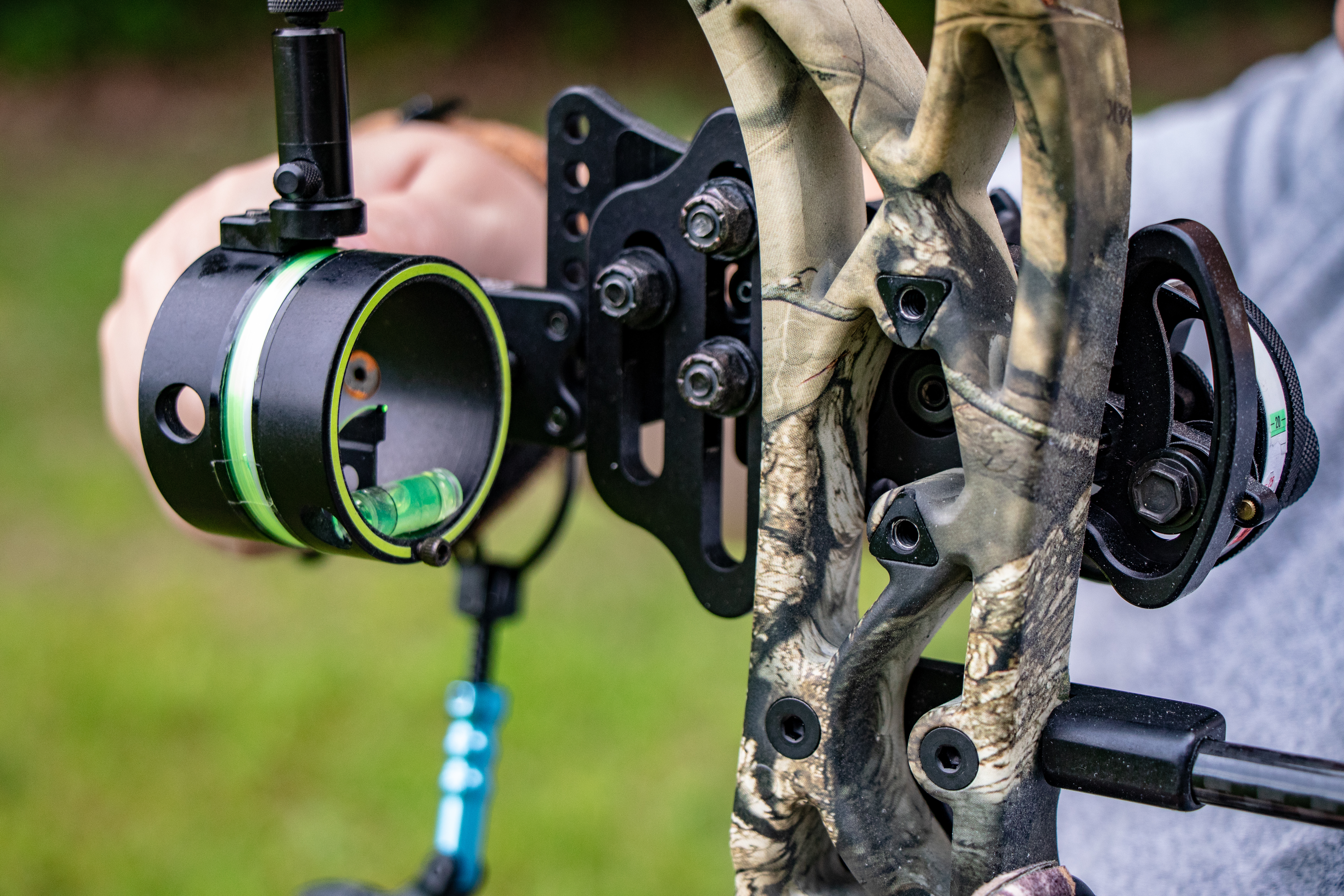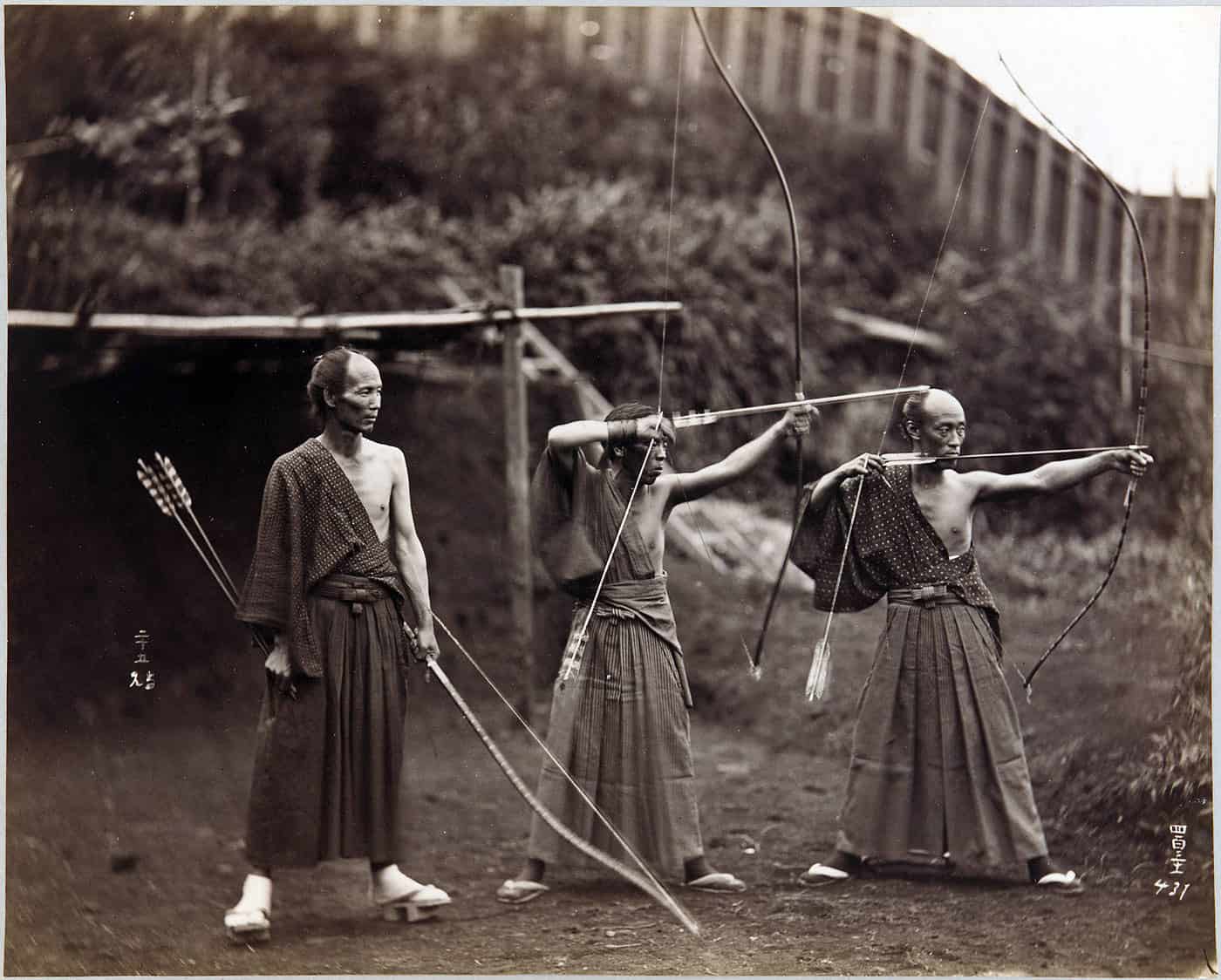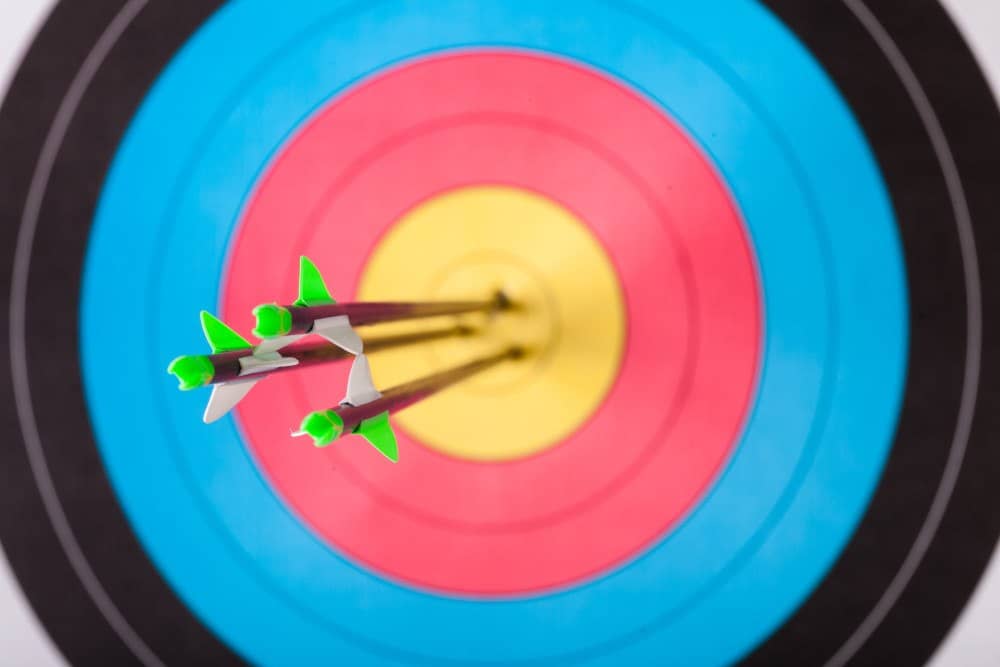Archery is, at its core, a sport that deals with equipment. It’s not like swimming, or running, or martial arts, where you’re using your body, and your body only. To be an archer, you need tools, and you can’t learn the sport without the proper gear.
And like all endeavors that require tools, you need to keep your equipment in tip-top shape. You can have the bow of your dreams, but unless you take care of it, it’s won’t be worth much in a year or two. It’s actually kind of surprising how quickly a bow—even a well-made bow—can fall into disrepair, and a bow that hasn’t been maintained can not only be ineffectual, it can actually be dangerous.
In the post below, we’ll provide some pointers on how to keep your recurve and/or compound bow in great shape. You may have some bow maintenance tips to add, and if that’s the case, we’d love to hear them—please feel free to add them to the “Comments” section below.

A Well-Tuned Bow is a Healthy Bow
We’ll start with this one, because it’s short and sweet, and it’s a great piece of advice: one of the best ways to keep your bow healthy is to tune it correctly. Find your measurements—make sure you know your exact draw length, and figure out a draw weight that works for you—and adjust it so that it fits you exactly.
We’ve written a lot of posts about tuning your bow, but if you’re new to archery and want to get started right away, a bow tech at your local sports shop or outfitter can help you, and if there’s an archery range near your house, they usually have folks there who can help you as well.
Perform “Mini-Inspections” Every Time You Shoot
We tend to think of “maintenance” as something you do when you’re not shooting, but the truth is, most bow maintenance is done right before and during a practice session. Here some things to do before and during your practice:
Make Sure Your Riser is Safe
All parts of a bow are important, but the riser has a central role in your bow’s performance. It’s the central hub that unites all parts of your bow, and when you’ve got problems with your riser, they tend to cause problems in other parts of your bow, as well. Before you draw your first arrows, check the following:
Look at the Grip to Ensure It’s Stable. Make sure that there are no cracks or gaps in the grip, and that it feels secure—many grips are carved out of the riser itself, but some are attached to the riser, and the attachment (be it with glue or other adhesive) can sometimes loosen or wobble;
Check the Area Where the Riser Meets the Limbs. Look at the area of the riser that attaches to the limbs, both above and below the riser. These parts of the bow experiences incredible pressure at full draw, so give them a quick look to make sure they’re attached properly. If you’re using a takedown recurve, make sure the limbs are screwed in properly and tightly; if you’re using a compound, make sure there’s no “wobble” to the bolts, and the limbs are fixed solidly in place. You do NOT want the limbs to wobble in any way—if they’re wobbling, take the bow to your nearest bow tech immediately; and finally
Ensure that your accessories are properly installed. The riser is often where the majority of your accessories—namely, your arrow rest, you bow sight, your stabilizer, and if you’re using a compound bow, your cable guard and quiver attachment—are located, and you’ll want to check all those add-ons to make sure:
1) They’re attached tightly. Loose accessories can be ineffective (a loose bow sight is going to be no use when you’re aiming) but they can also be dangerous: a wobbly arrow rest can send your arrows flying in all sorts of directions, and that is definitely a bad thing; and
2) There are little to no “erosion marks.” After repeated use for many months, you may find that certain parts of your bow get worn down. This is most easily seen on your arrow rest if you’re using a recurve, but you can also see erosion on a containment rest and/or a whisker biscuit. When you see that a part is worn down, it’s usually telling you that it’s time to replace that part.
Take Care of the Bowstring
Of all the bow’s parts, the bow string requires the most frequent maintenance because it’s the most prone to wear and tear. Although modern bowstrings are made from complex polyethylenes, they still behave like the bowstrings of flax, hemp, and animal sinew that were common long ago, and they fray and snap when overstressed—or simply used too much. Here are a few things to look out for during your archery practice:
Take a Really Good Look at that Bow String. It’s hard to stress how important this is. If you find frayed threads, or locations on the string where it looks atypical or different from the rest of the string, replace the string (if you’re using a recurve) or take it to your nearest bow tech to be replaced (if you’re using a compound). Shooting a bow with a faulty string is incredibly dangerous, and fixing it is not something you want to put off.
During your review, make sure you check all parts of the string, too—not just the area where you nock your arrow. If you’re shooting a recurve, look at the nocking point, the area above and below the nocking point, and the area where the string attaches to the limb (that’s the part that curves forward—the reason why recurves are called recurves—because they “re”curve forward), and if you’re shooting a compound, check the D-loop, the area above and below the D-loop, the string at the cams (and make sure it’s aligned and not leaning right or left), but also check the cable, and make sure the cable is securely fastened in the cable guard.
Again, if you find frayed threads, or locations on the string where it looks atypical or different from the rest of the string, replace the string ASAP (if you’re shooting a recurve) or bring it to your favorite bow tech to be replaced (if you’re shooting a compound).
Keep Your String in Shape with Wax. One of the best ways to maintain the integrity of a bow string is to wax it. There’s some debate as to how often you should wax your bow string—some of the stricter folks say after every session, but that can be a bit much, and can actually be detrimental to the string—while others say you should wax it every few sessions. That’s probably good enough for most folks—once a week should do it.
Listen Closely as You Release Your Arrows. If you’re bow makes a lot of noise when you shoot it, or if you can feel that it’s vibrating a lot, that can mean the bow strings are loose. Give the bow string (and cables, if you’re using a compound) a good review to make sure they’re tight.
If You’re Shooting a Recurve, Use a Bow Stringer. They may take a little longer than simply using your legs (aka, the “step-through” method), but bow stringers are most definitely a “best practices” way to prevent the bow’s limbs from warping and the tips from injuring you as you try to put on the bowstring. We’ve actually written an entire post about why using a bow stringer is a good idea, so check that out.
Store Your Bow Properly
We imagine that most “wear and tear” happens to bows while we’re using them, but how we store bows is important, too. Here are a few tips to remember:
Make Sure Your Bow and Bow String are Clean. If you’ve been in the great outdoors, be sure to remove any dirt or grime from the riser, limbs, bow string, and accessories. You’d be surprised how gunked up a bow can get, even if you didn’t run into inclement weather.
Consider a Bow Case for Both Storage and Transportation. Bow cases usually fall into two categories: soft cases and hard cases. Soft cases are OK—they’re usually made of a durable fabric, and can be great carrying cases—but if you’re doing any real travelling, you may want to consider a hard case. They’re usually made from hard plastic (and some high-end ones are incredibly strong), and they’ll protect your bow while you bring it from place to place.
If You Don’t Need a Case, Hang It Up Someplace. It’s easy to toss it into a corner of the shed or garage, but that usually leads to some kind of build-up on the string or the cams (if you’ve got a compound bow). Try to hang it on a peg up high someplace—you’ll keep it clear of grime, and it’ll be tougher for pets / nosy neighbors / kids to get to.
Be Careful about Heat. Heat can be brutal—not only can it delaminate the bow’s limbs, it can erode bow strings and cables. So if you’ve tossed your bow in your car or truck, be careful about leaving it in there too long, especially if you’ve got the windows rolled up. Also be careful with storage spaces, like attics—they can get pretty darn hot, and you don’t want to drag your bow out, only to find it’s undergone some structural damage.
Get It an Annual Inspection by an Expert
Ever hear that saying, “A stitch in time saves nine?” It means, basically, that preventing damage is easier than fixing it, and that is most definitely the case with bows. In the same way that you’d bring your car or truck to the garage for a once-a-year tune-up, a full, once-a-year review by an experienced bow tech can be a great idea.
He or she will review the bow top to bottom, and look for alignment issues, inconsistencies with cam timing, and a couple other dozen things you’d never think to look at. Unless you, yourself, are a professional bowyer, it can’t hurt to have someone who works with bows for a living give your rig a look.
Want Your Bow to Last a While? Don’t Dry Fire It
Even if you already know that you shouldn’t dry fire a bow, there are a few tips in this section you might not have occurred to you, so we’d urge you to read on.
Most archers know what a “dry fire” is, but we’ll define it anyway: “dry firing” is when an archer draws back his or her bow and releases the bow string without an arrow on the bow string. It’s a big, big no-no, and it tends to happen in two ways:
1) People either don’t know about dry firing, or think their bow is somehow special, and dry fire without an arrow, like this guy here:
2) They nock an arrow, but don’t do so properly, and then release the bow string, like this guy here:
As you can see, dry firing bad for your bow, but it can also be incredibly dangerous to you and the people around you—the string and/or cable can snap and whip your eye out, or parts of the bow can projectile launch and hit you or someone around you, or something even worse, that we can’t even imagine. Don’t be the guy who finds out new ways that dry firing can harm you!
It’s also worth mentioning that you, yourself, may be very careful with your bow, but you also need to be careful when you lend your bow out to other people—PARTICULARLY inexperienced archers. Inexperienced archers are the ones most likely to dry fire a bow, because they’re new to the sport and don’t know what they’re doing, so be careful when you’re showing off your gear. That is, in our estimation, the #1 time that people say “Wow, awesome bow!” And then pull back and let loose before you can say, “Carl don’t be stupid that’s called a dry fire it’ll ruin the bow CARL!” Stupid Carl.
If someone DOES dry fire your bow, review the riser and limbs and string—and be very, very careful the next time you use it. Closely inspect the whole rig, but particularly the riser and limbs. When you dry fire a bow, all the kinetic energy that is usually transferred to the arrow during the shot gets redistributed throughout the bow, and it can do tremendous damage to the bow, and loosen cables, cams, limbs, and so on. Give it a top-to-bottom look, and if you want to really be careful, take it to a bow tech, to make sure it’s still structurally sound.
There are two more tips about dry firing we should mention, before we move on:
1) Always shoot arrows that are the right weight and spine. If you have a heavy bow and you shoot arrows that are far too light or far too flexible, your bow may be gobbling up more kinetic energy during a shot than it’s supposed to. Always make sure you’re using arrows that are heavy enough and stiff enough for your rig, and
2) Before every shot, make sure your arrow nocks (the cleft-looking thing at the back of the area) is in good shape. This sounds insignificant, but it’s actually really important: if you think about it, a LOT of the kinetic energy from the bow is transferred to the arrow, and transferred to the arrow at the nock. It’s got to be VERY strong to handle all that energy, so looks for chips or cracks, because a nock that falls apart when the bow string pushes against it—that’s bad news, and that’s another way a lot of dry fires occur.
Two Miscellaneous Things to Remember…
Before we wrap up, here are two other bow maintenance tips you’ll want to keep in mind:
Be Stingy with Your Bow. We like to eschew a “share and share alike” philosophy here at The Complete Guide, but that may not be the best policy when it comes to bows. The way you shoot your bow can be very unique, and bows can become conditioned to your style of drawing—so anyone other than you who uses the device may damage it.
Kids Outgrow Bows, and That Can Be Dangerous. This is actually related to the last tip. When young archers grow, their draw styles change and their bows cease to fit their bodies, leading to a need for new equipment. If you’re a parent, be careful about falling into the trap of thinking that “one size fits all”—it doesn’t, and an improperly tuned bow can be dangerous. Make sure your child is using equipment that fits him or her, and keep an eye out for growth spurts—you’ll want to review his/her archery equipment to make sure it’s still safe.
Those are the Basics
There you go! Those are a few of the most basic things you’ll want to do to elongate the life of your bow. If you’ve got tips that have worked for you, please feel free to leave them below! Have fun, and safe shooting!




